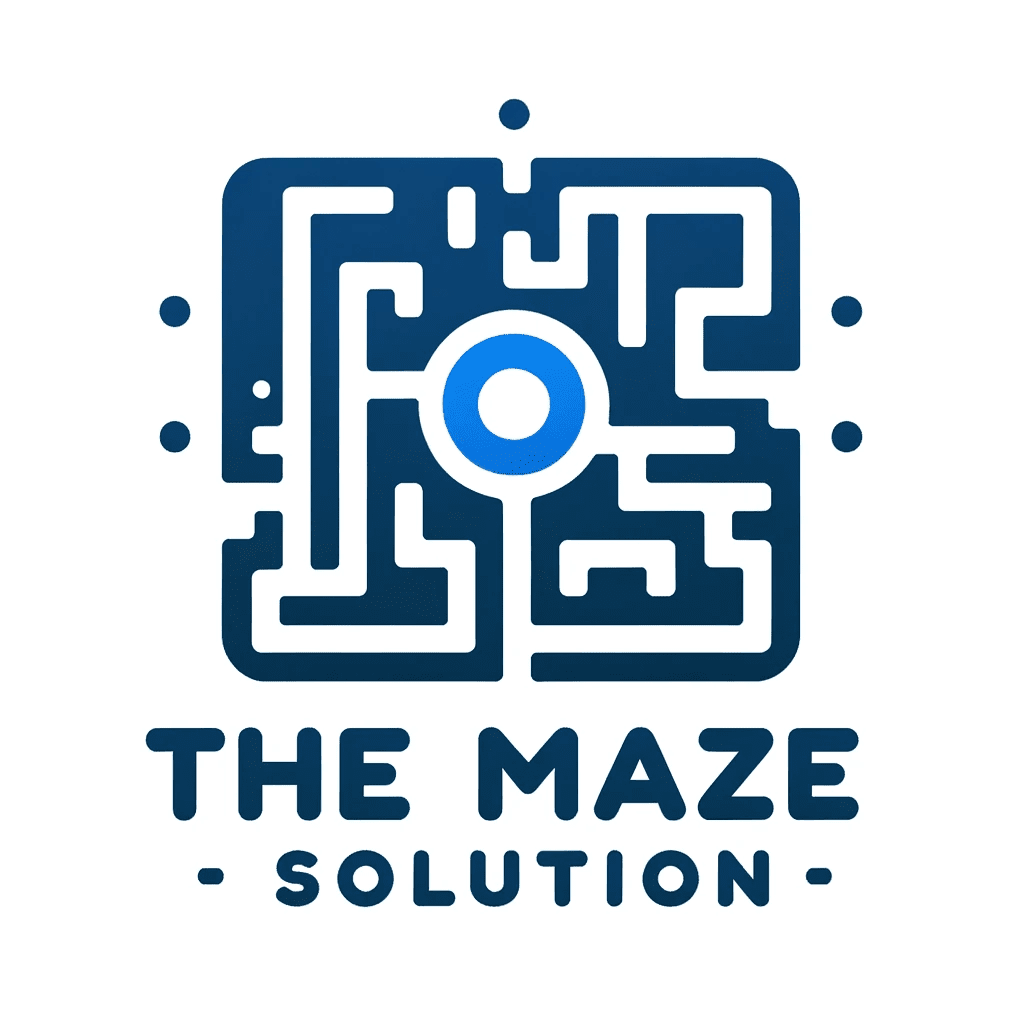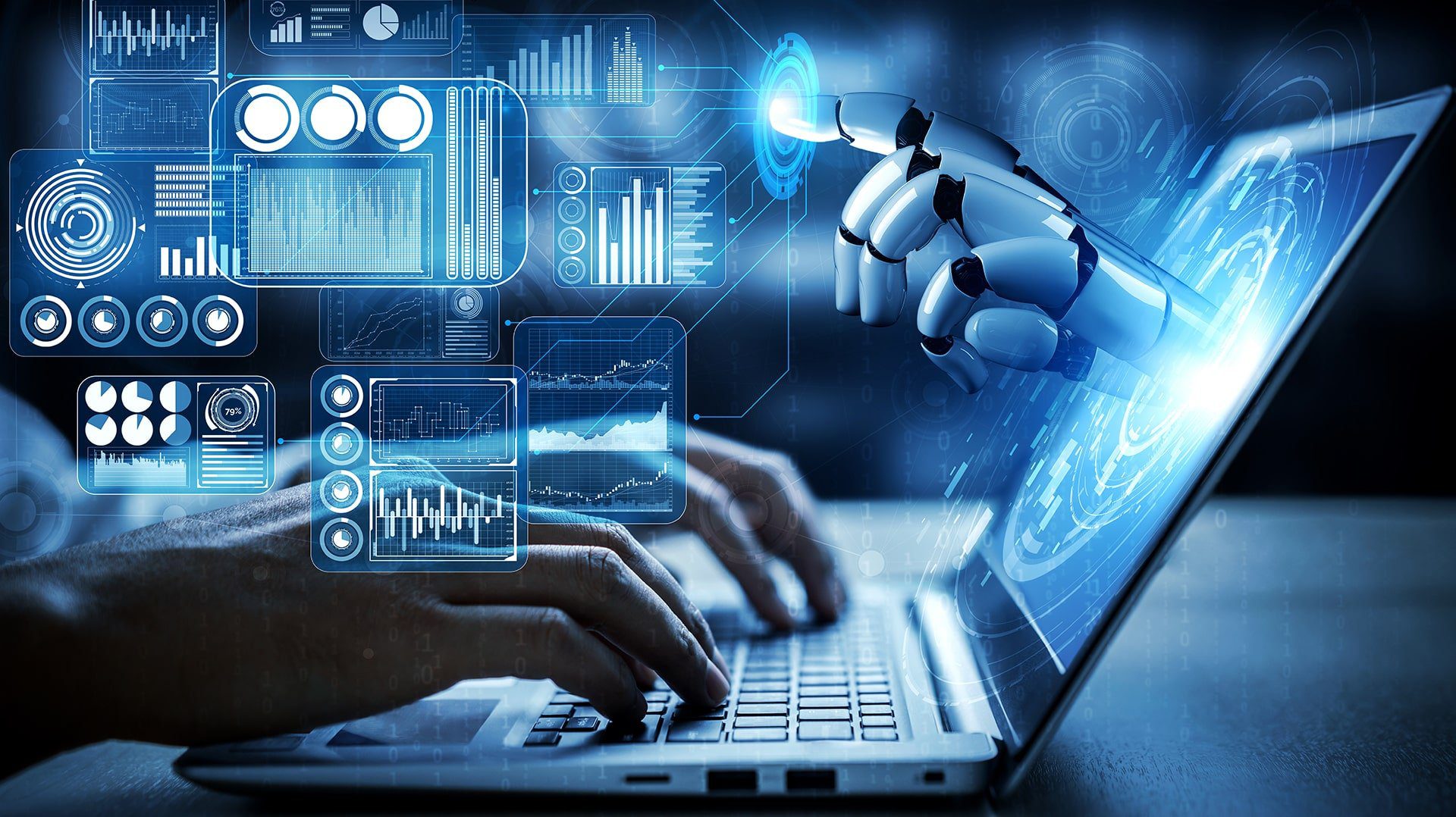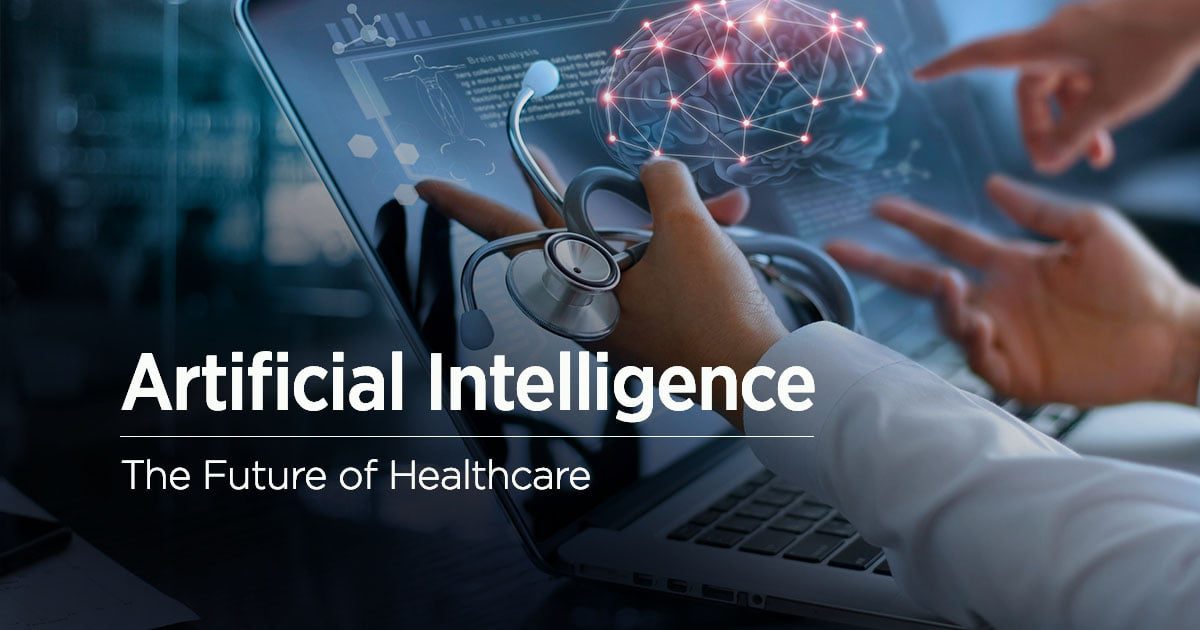The Pros and Cons of Artificial Intelligence in Education System
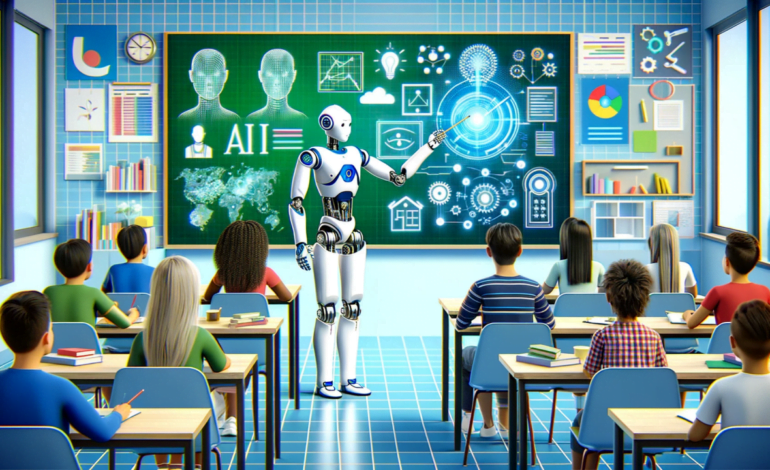
Artificial Intelligence (AI) is revolutionizing various sectors, and the education system is no exception. As AI technologies continue to evolve, their integration into educational frameworks brings both opportunities and challenges. This blog explores the artificial intelligence in education pros and cons, providing a detailed analysis of how Artificial Intelligence in Education reshaping education system, the benefits it offers, and the potential drawbacks it poses.
Introduction to Artificial Intelligence in Education
Artificial Intelligence in education refers to the use of AI technologies to enhance learning experiences, streamline administrative tasks, and provide personalized educational opportunities. From AI-powered tutoring systems to administrative automation, the impact of Artificial Intelligence in Education is profound and multifaceted. AI is Revolutionizing us daily: 10 Ways Artificial Intelligence is Revolutionizing Daily Life
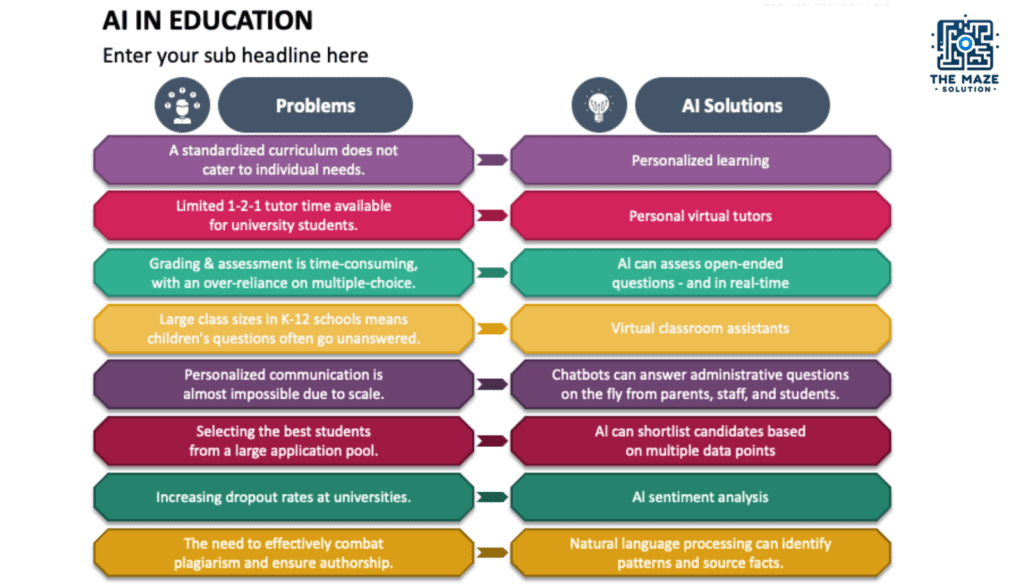
Artificial Intelligence in Education Pros and Cons
Pros of Artificial Intelligence in Education
Personalized Learning Experiences
AI in education allows for the creation of personalized learning experiences tailored to individual students’ needs. Traditional teaching methods often follow a one-size-fits-all approach, which can leave some students behind while others become bored. AI systems, however, can analyze data on students’ learning patterns, strengths, and weaknesses to provide customized lessons.
For example, adaptive learning platforms use AI algorithms to adjust the difficulty level of tasks based on a student’s performance. If a student struggles with a particular concept, the system can provide additional resources or exercises to help them grasp it. Conversely, if a student excels, the system can present more challenging materials to keep them engaged. This level of personalization ensures that each student receives the support they need, which can significantly improve both engagement and educational outcomes.
Enhanced Efficiency in Administrative Tasks
Administrative tasks such as grading, scheduling, and student assessments can be incredibly time-consuming for educators. These responsibilities can take away valuable time that teachers could otherwise spend on direct instruction and student support. AI streamlines these processes, reducing the administrative burden on teachers and allowing them to focus more on teaching and student interaction.
For instance, AI-powered grading systems can automatically grade multiple-choice tests and even provide feedback on essays by analyzing text for content, grammar, and coherence. Scheduling software can optimize timetables to ensure that resources are used efficiently and conflicts are minimized. By automating these tasks, AI not only saves time but also reduces the potential for human error, leading to more accurate and efficient administration.
Accessibility and Inclusivity
Artificial Intelligence in Education can make education more accessible to students with disabilities, ensuring that education is inclusive for all. For instance, AI-powered tools can provide real-time transcription for hearing-impaired students, converting spoken language into text that they can read on their devices. This allows them to follow along with lectures and participate in discussions more easily.
Similarly, text-to-speech functionalities can assist visually impaired learners by reading out written content, making textbooks and other materials accessible. AI can also support students with learning disabilities by offering tools that help with organization, time management, and task completion. These technologies ensure that all students, regardless of their physical or cognitive abilities, have the opportunity to succeed in their educational pursuits.
Improved Student Engagement
AI in education useful tools can create interactive and engaging learning environments. Traditional lectures and textbooks can sometimes fail to capture students’ interest, leading to disengagement and poor retention of information. AI can transform these experiences by introducing elements of gamification, virtual reality, and intelligent tutoring.
Gamified learning platforms use game mechanics such as points, badges, and leaderboards to motivate students and make learning fun. Virtual reality experiences can immerse students in interactive environments where they can explore historical sites, conduct scientific experiments, or practice languages in realistic settings. Intelligent tutoring systems provide immediate feedback and adapt to each student’s pace, making the learning process more dynamic and responsive. These tools keep students motivated and interested in their studies, leading to better educational outcomes.
Data-Driven Insights
Artificial Intelligence in Education can analyze vast amounts of educational data to provide insights into student performance and learning trends. This data-driven approach allows educators to make informed decisions, identify areas for improvement, and implement strategies to enhance educational outcomes.
For example, AI can track students’ progress over time, identifying patterns and predicting future performance. If a student is struggling with a particular subject, the system can alert educators early, allowing for timely intervention. Schools can also use this data to evaluate the effectiveness of different teaching methods and curricula, making adjustments as needed to improve overall educational quality.
Furthermore, Artificial Intelligence in Education can provide insights at a macro level, such as identifying trends in student performance across different demographics or geographical areas. This information can help policymakers and educational institutions develop targeted programs and allocate resources more effectively. By leveraging the power of data, Artificial Intelligence in Education enables a more proactive and strategic approach to education, ultimately benefiting students, teachers, and the education system as a whole.
Cons of Artificial Intelligence in Education
Privacy Concerns
The use of AI in education involves the collection and analysis of significant amounts of personal data. This data includes students’ academic records, behavioral patterns, and even personal information. Such extensive data collection raises significant privacy concerns. Ensuring that student data is protected and used ethically is a critical challenge for educators and AI developers.
Data breaches and unauthorized access to sensitive information can have serious consequences for students. Educational institutions must implement robust security measures to safeguard data and comply with regulations such as the General Data Protection Regulation (GDPR) and the Family Educational Rights and Privacy Act (FERPA). Additionally, transparency about how data is collected, stored, and used is essential to maintain trust among students, parents, and educators. Institutions must also consider ethical guidelines to ensure that data is used to benefit students and not for exploitative purposes.
Dependency on Technology
Over-reliance on AI technologies can lead to a reduction in critical thinking and problem-solving skills. If students and educators become too dependent on AI tools, they may struggle to perform tasks without technological assistance, potentially diminishing the quality of education.
For example, while AI can provide quick answers and solutions, it may also discourage students from developing their own analytical skills. If students constantly rely on AI for homework help or problem-solving, they may not fully engage with the material or develop the necessary cognitive skills to tackle challenges independently. Similarly, educators who depend heavily on AI for grading and lesson planning might lose touch with the nuances of their students’ needs and progress. Balancing the use of AI with traditional teaching methods is crucial to ensure that students develop a well-rounded skill set.
Cost and Accessibility
Implementing AI in educational institutions can be expensive. The costs associated with purchasing, maintaining, and updating AI systems may be prohibitive for some schools, particularly those in underfunded areas. This can lead to disparities in educational quality and access.
Schools in affluent areas may have the resources to invest in cutting-edge AI technologies, while underfunded schools may struggle to provide even basic technological tools. This digital divide can exacerbate existing inequalities in education, leaving students in disadvantaged areas with fewer opportunities to benefit from AI-enhanced learning experiences. Additionally, the ongoing costs of training staff to use AI tools effectively and maintaining these systems can strain already limited budgets. Policymakers and educational leaders must address these disparities to ensure equitable access to AI technologies for all students.
Bias and Fairness Issues
AI systems are only as unbiased as the data they are trained on. If the training data contains biases, the AI tools can perpetuate these biases, leading to unfair treatment of certain student groups. Ensuring fairness and neutrality in AI systems is a significant challenge.
For instance, if an AI system used for student assessment is trained on data that reflects historical biases, it might unfairly disadvantage students from certain backgrounds. This could result in lower grades or fewer opportunities for these students, perpetuating existing inequalities. Developers must ensure that training data is representative and free from biases, and continuously monitor AI systems for signs of unfairness. Implementing mechanisms for human oversight and intervention can help mitigate these issues and ensure that AI tools promote equity in education.
Job Displacement
The automation of administrative and instructional tasks by AI can lead to job displacement for educators and administrative staff. While AI can enhance efficiency, it also raises concerns about the future of employment in the education sector.
As AI systems take over tasks such as grading, scheduling, and even tutoring, there is a risk that some educational roles may become redundant. This can lead to job losses and reduced job security for teachers and administrative personnel. Moreover, the skills required for future educational roles may shift, necessitating retraining and adaptation for many professionals. To address these concerns, it is essential to strike a balance between automation and human involvement, ensuring that AI serves as a tool to enhance rather than replace the crucial roles educators play in the learning process.
Balancing AI Integration in Education
To maximize the benefits and minimize the drawbacks of Artificial Intelligence in Education, it is essential to adopt a balanced approach. Here are some strategies:
- Implementing Robust Data Privacy MeasuresEducational institutions must prioritize data privacy by implementing strong security protocols and ensuring compliance with relevant regulations. Clear policies regarding data usage and transparency can help build trust and protect student information.
- Promoting Critical ThinkingWhile AI tools can aid learning, educators should also encourage students to engage in critical thinking and problem-solving activities independently. This can be achieved by integrating AI tools with traditional teaching methods that foster cognitive development.
- Ensuring Equitable AccessPolicymakers and educational leaders must work to bridge the digital divide by providing resources and support to underfunded schools. Grants, subsidies, and partnerships with technology companies can help make AI technologies more accessible to all students.
- Addressing Bias and Ensuring FairnessDevelopers and educators must work together to identify and eliminate biases in AI systems. This involves using diverse training data, conducting regular audits, and implementing human oversight to ensure fair treatment of all students.
- Supporting Workforce Adaptation To mitigate job displacement, educational institutions should invest in professional development and retraining programs for educators and administrative staff. This will help them adapt to new roles and leverage AI technologies effectively.
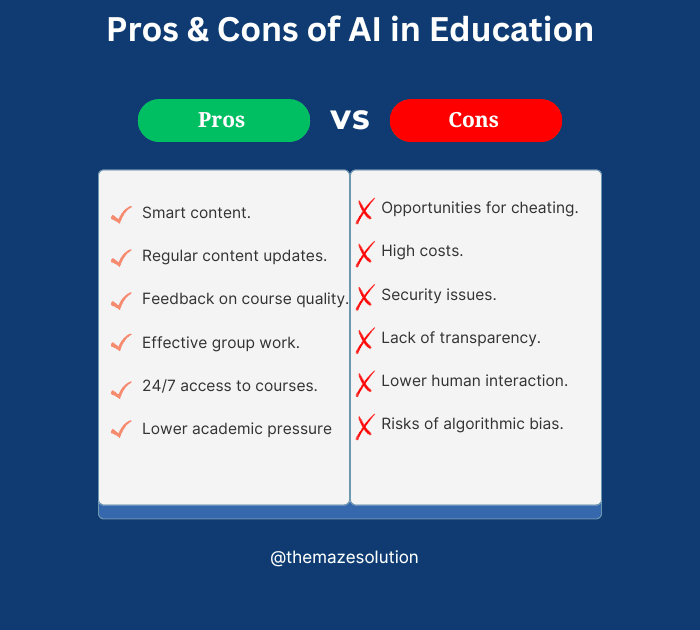
Detailed Examination of Applications of AI in Education
I-Powered Tutoring Systems
AI-powered tutoring systems offer personalized assistance to students, providing real-time feedback and tailored learning materials. These systems can identify areas where students struggle and adapt lessons accordingly, ensuring a customized learning experience.
Administrative Automation
AI can automate various administrative tasks, such as scheduling, grading, and attendance tracking. This automation frees up educators’ time, allowing them to focus more on teaching and interacting with students, thereby enhancing the overall educational experience.
Intelligent Content Creation
AI can assist in the creation of educational content, such as interactive textbooks, quizzes, and learning modules. By analyzing student data, AI can generate content that addresses specific learning needs, making education more effective and engaging.
Predictive Analytics
AI’s predictive analytics capabilities can help educators identify at-risk students and intervene early. By analyzing patterns in student performance and behavior, AI can provide insights into potential challenges and recommend strategies to address them, improving student retention and success rates.
Virtual Learning Environments
Virtual learning environments (VLEs) powered by AI offer immersive and interactive educational experiences. Through the use of virtual reality (VR) and augmented reality (AR), students can engage in simulations, virtual field trips, and interactive lessons that enhance understanding and retention.
Case Studies of AI in Education
Study 1: AI in Personalized Learning
In a pilot program, a school district implemented an AI-powered personalized learning platform. The platform analyzed student data to customize lessons and provide individualized feedback. The results showed significant improvements in student engagement and academic performance, demonstrating the potential of AI to enhance personalized learning experiences.
Case Study 2: AI in Administrative Efficiency
A university adopted an AI system to automate administrative tasks such as scheduling and grading. The system reduced the administrative workload on faculty, allowing them to dedicate more time to research and teaching. The university reported increased efficiency and improved student satisfaction as a result of the AI implementation.
Ethical Considerations in AI Education
Data Privacy and Security
Protecting student data is paramount when implementing AI in education. Institutions must ensure that data collection and usage comply with privacy regulations and that robust security measures are in place to prevent unauthorized access.
Fairness and Bias Mitigation
To ensure that AI systems are fair and unbiased, developers must use diverse and representative training data. Continuous monitoring and testing are necessary to identify and address any biases that may arise, ensuring equitable treatment for all students.
Transparency and Accountability
Transparency in AI systems is crucial for building trust among educators, students, and parents. Institutions should provide clear information about how AI tools are used, what data is collected, and how decisions are made. Accountability measures should be established to address any issues that may arise from AI implementation.
Future Trends in Artificial Intelligence and Education
Adaptive Learning Technologies
Adaptive learning technologies are expected to become more sophisticated, offering even more personalized and responsive educational experiences. These technologies will continue to evolve, providing students with tailored learning paths that adapt in real-time to their needs and progress.
AI in Assessment and Evaluation
AI will play an increasingly significant role in student assessment and evaluation. Advanced AI systems will be able to provide more accurate and comprehensive assessments of student performance, going beyond traditional testing methods to evaluate a broader range of skills and competencies.
Collaboration Between AI and Human Educators
The future of AI in education will likely involve greater collaboration between AI systems and human educators. AI will serve as a powerful tool to support teachers, providing them with valuable insights and resources while allowing them to focus on the human aspects of education that AI cannot replicate.
Conclusion
The integration of AI in education presents both exciting opportunities and significant challenges. By understanding the pros and cons of AI in education, educators and policymakers can make informed decisions about how to best leverage AI technologies to enhance learning experiences while addressing potential drawbacks. As AI continues to evolve, its impact on education will undoubtedly grow, offering new possibilities for personalized, efficient, and inclusive learning environments. However, it is essential to navigate the ethical and practical considerations carefully to ensure that the benefits of AI in education are realized while minimizing any adverse effects.
Read our other Interesting Blogs:
“How to Turn Off Meta AI on Facebook?”This blog is really amazing if you want to get more knowledge about Artificial Intelligence: Click Here : How to Turn Off Meta AI on Facebook?
“10 Ways AI is Revolutionizing Daily Life” This blog is really amazing if you want to get more knowledge about Artificial Intelligence: Click Here : 10 Ways Artificial Intelligence is Revolutionizing Daily Life
“How AI Will Transform Everyday Tech? ” This blog gives you the knowledge that how Artificial Intelligence transforming us ,Click here to read : How Artificial Intelligence Will Transform Everyday Tech?
“The Future of Quantum Artificial Intelligence: Elon Musk’s Game-Changing Ideas ” This blog gives you the knowledge that how Artificial Intelligence transforming us ,Click here to read : The Future of Quantum Artificial Intelligence: Elon Musk’s Game-Changing Ideas
